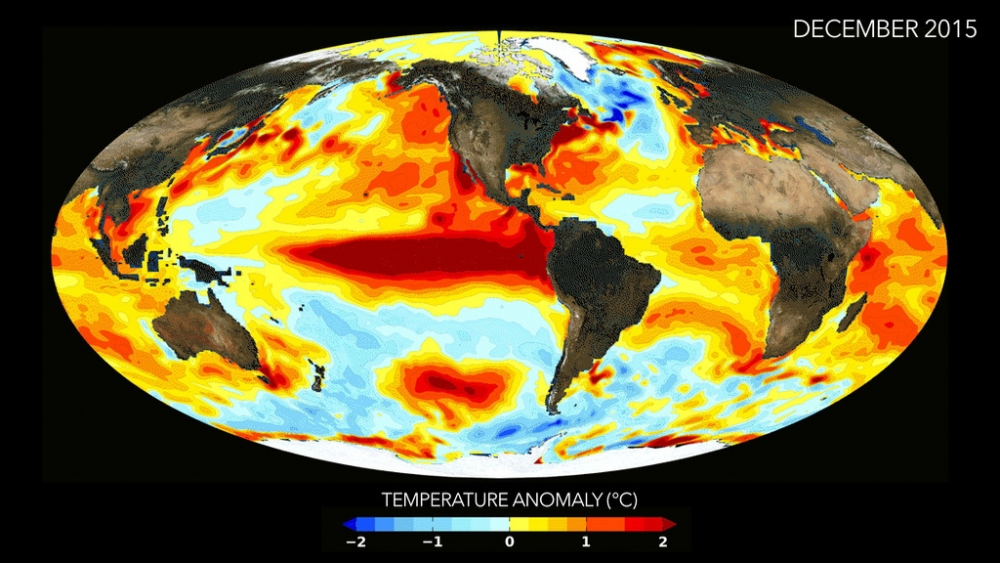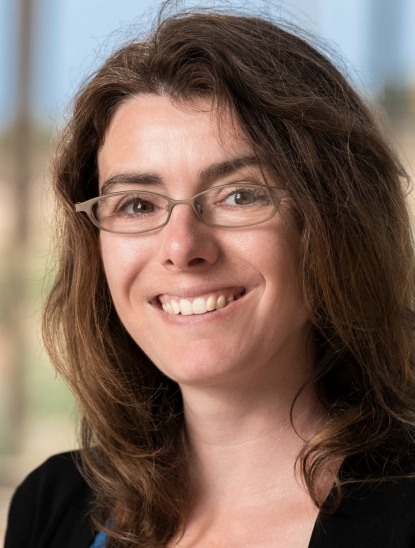
Fine Tuning

“El Niño de Navidad,” or the little boy of Christmas, the fishermen called it: a period of unusually warm water in the eastern Pacific that typically peaks around December. The South American pescadores may not have known back in the 1600s what caused this phenomenon, but they would certainly have noticed its effects on the weather and sea life.
Indeed, El Niño can affect weather across the globe, so understanding how this pattern will fluctuate in a potentially much warmer future is critical. However, this question has frustrated scientists thus far, since climate models don’t even agree on whether El Niño will become more or less pronounced as time goes on. Fortunately, UC Santa Barbara’s Samantha Stevenson has received a National Science Foundation CAREER Award to investigate how climate change will affect these events. The roughly $880,000 grant will fund five years of research.
“Some of the models are saying El Niño will strengthen, and some of the models are saying it won’t,” said Stevenson, an assistant professor at the Bren School of Environmental Science & Management. “We want to know why.”
The El Niño-Southern Oscillation, abbreviated to ENSO, is a 3- to 7-year variation in the surface temperature of the equatorial Pacific Ocean. El Niño years see warm surface water in the central and eastern Pacific (American west coasts), while this warm water shifts to the western Pacific (toward Indonesia) during La Niña years. In neutral years water temperatures are fairly consistent across the equatorial Pacific.
This cycle has a profound influence on weather patterns, particularly in the regions surrounding the Pacific Ocean. In California, for instance, the high water temperatures of El Niño bring rain storms, while drought often accompanies the chilly conditions of La Niña. ENSO influences the location and severity of events like typhoons, floods, droughts, heatwaves and more. It also affects marine conditions like algae blooms, animal distributions and ecosystems such as coral reefs and kelp forests.
So far, climate models have helped scientists and meteorologists forecast ENSO’s effects on a yearly basis. But the situation gets complicated when they look to the future. “Ever since there have been climate models that could represent El Niño, none of them have agreed on how climate change is going to affect variability of the tropical Pacific,” Stevenson said.
Climate models are complicated, and there are hundreds of changes between subsequent generations. “It’s not a clean experimental setup,” Stevenson said, “because we’re changing so many things across all the different models.” With so many variables in flux, it’s impossible to tell what factors are most important to get right in order to bring the models into better agreement.
Stevenson plans to begin sorting this out by focusing on the models themselves, looking at how they’re constructed and why there’s a discrepancy between the predictions they yield. She will start by looking at oceanographic factors. “It’s something that nobody really had the time to do in a dedicated way before,” she said. The CAREER Award will fund one postdoctoral researcher and two Ph.D. students for five years to assist in this endeavor.
One goal is to develop recommendations for improving models and forecasting in a way that incorporates climate change. “It would be great if we could just figure out which models were right about ENSO and climate change,” Stevenson said, though she suspects this may take more time and a hard look at the atmospheric factors. She also wants to determine if there are things we can measure now that could provide insights on conditions at the end of the century.
Stevenson plans to hire a rotating group of masters and undergraduate students to work on training and educational materials. Right now, there are very few intermediate-skill tutorials for working with climate models. She aims to put together a set of online tutorials that people can use either as self-guided exercises or incorporate into classrooms. They will combine short videos and interactive coding material somewhat similar to existing data science boot camps, but with a focus on climate modeling techniques.
“This project will allow us to be more confident in future projections of El Niño’s characteristics,” Stevenson said, “and, in turn, create more reliable assessments of future climate-driven risks.”



